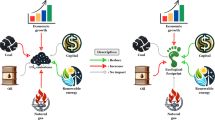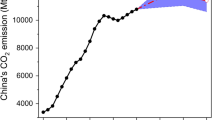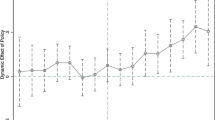Abstract
With the increase in international trade, more attention has been given to quantifying the impacts of international trade on energy use and carbon emissions. Input-output analysis is a suitable tool for assessing resources or pollutants embodied in trade and it has become a critical tool for performing such analysis. This study estimated the national and sectoral carbon emissions embodied in Chinese international trade using the latest available China input-output table of 2007. The results showed that a significant exporting behavior of embodied carbon emissions existed in China’s trade. Over 1/3 of the emissions in Chinese domestic production processes were generated for exports in 2007. The net balance of emissions embodied in exports and imports accounted for nearly 30% of China’s domestic emissions, which means that any policy made to increase the exports would result in a significant growth of China’s domestic emissions. Since over half of China’s export trade is processing trade, the re-exported emissions could not be overlooked; otherwise, it would hard to capture the actual emissions generated abroad to obtain China’s domestic consumption. The enlargement of export scale is a primary driven factor to the rapid growth of China’s exported emissions. It is necessary for China to adjust its economic and industrial structure to reduce the dependence of economic growth on the export trade. However, when adjusting industry structures or making policies on carbon emission reduction, it will be more reasonable to consider the relationship between production and consumption, rather than just focus on the emission values of sectors’ direct production, as a large part of carbon emissions emitted by the principal direct polluters were generated to obtain the products which were required by other sectors.
Similar content being viewed by others
References
Machado G, Schaeffer R, Worrell E. Energy and carbon embodied in the international trade of Brazil: an input-output approach. Ecological Economics, 2001, 39(3): 409–424
Wyckoff A W, Roop J M. The embodiment of carbon in imports of manufactured products: implications for international agreements on greenhouse gas emissions. Energy Policy, 1994, 22(3): 187–194
Peters G P, Hertwich E G. CO2 embodied in international trade with implications for global climate policy. Environmental Science and Technology, 2008, 42(5): 1401–1407
Davis S J, Caldeira K. Consumption-based accounting of CO2 emissions. Proceedings of the National Academy of Sciences of the United States of America, 2010, 107(12): 5687–5692
Tolmasquim M T, Machado G. Energy and carbon embodied in the international trade of Brazil. Mitigation and Adaptation Strategies for Global Change, 2003, 8(2): 139–155
Munksgaard J, Pedersen K A. CO2 accounts for open economies: producer or consumer responsibility? Energy Policy, 2001, 29(4): 327–335
Bastianoni S, Pulselli F M, Tiezzi E. The problem of assigning responsibility for greenhouse gas emissions. Ecological Economics, 2004, 49(3): 253–257
Lenzen M, Murray J, Sack F, Wiedmann T. Shared producer and consumer responsibility-theory and practice. Ecological Economics, 2007, 61(1): 27–42
Peters G P. From production-based to consumption-based national emission inventories. Ecological Economics, 2008, 65(1): 13–23
Peters G P, Hertwich E G. Post-Kyoto greenhouse gas inventories: production versus consumption. Climatic Change, 2008b, 86(1–2): 51–66
National Bureau of Statistics. China Statistical Yearbook 2008. Beijing: China Statistics Press, 2008 (in Chinese)
Pan J H, Phillips J, Chen Y. China’s balance of emissions embodied in trade: approaches to measurement and allocating international responsibility. Oxford Review of Economic Policy, 2008, 24(2): 354–376
Weber C L, Peters G P, Guan D B, Hubacek K. The contribution of Chinese exports to climate change. Energy Policy, 2008, 36(9): 3572–3577
Yan Y F, Yang L K. China’s foreign trade and climate change: a case study of CO2 emissions. Energy Policy, 2010, 38(1): 350–356
Lin B Q, Sun C W. Evaluating carbon dioxide emissions in international trade of China. Energy Policy, 2010, 38(1): 613–621
Shui B, Harriss R C. The role of CO2 embodiment in US-China trade. Energy Policy, 2006, 34(18): 4063–4068
Li Y, Hewitt C N. The effect of trade between China and the UK on national and global carbon dioxide emissions. Energy Policy, 2008, 36(6): 1907–1914
Xu M, Allenby B, Chen WQ. Energy and air emissions embodied in China-US trade: eastbound assessment using adjusted bilateral trade data. Environmental Science & Technology, 2009, 43(9): 3378–3384
Wei B Y, Fang X Q, Wang Y, Yang H M, Zhang D. Estimation of carbon emissions embodied in international trade for China: an input-output analysis. Journal of Beijing Normal University, 2009, 45(4): 413–419
Sánchez-Chóliz J, Duarte R. CO2 emissions embodied in international trade: evidence for Spain. Energy Policy, 2004, 32(18): 1999–2005
Ahmad N, Wyckoff A W. Carbon dioxide emissions embodied in international trade of goods. OECD Publications, 2003. http://www. oecd.org/sti/working-papers
Wiedmann T, Lenzen M, Turner K, Barrett J. Examining the global environmental impact of regional consumption activities-Part 2: review of input-output models for the assessment of environmental impacts embodied in trade. Ecological Economics, 2007, 61(1): 15–26
Leontief W. Environmental repercussions and the economic structure: an input-output approach. Review of Economics and Statistics, 1970, 52(3): 262–271
Schaeffer R, Leal de Sá A. The embodiment of carbon associated with Brazilian imports and exports. Energy Conversion and Management, 1996, 37(6–8): 955–960
Lenzen M. Primary energy and greenhouse gases embodied in Australian final consumption: an input-output analysis. Energy Policy, 1998, 26(6): 495–506
Lenzen M. A generalized input-output multiplier calculus for Australia. Economic Systems Research, 2001, 13(1): 65–92
Mongelli I, Tassielli G, Notarnicola B. Global warming agreements, international trade and energy/carbon embodiments: an input-output approach to the Italian case. Energy Policy, 2006, 34(1): 88–100
Ackerman F, Ishikawa M, Suga M. The carbon content of Japan-US trade. Energy Policy, 2007, 35(9): 4455–4462
Liu X B, Wang C. Quantitative analysis of CO2 embodiment in international trade: an overview of emerging literatures. Frontiers of Environmental Science & Engineering in China, 2009, 3(1): 12–19
Peters G P, Hertwich E G. Pollution embodied in trade: the Norwegian case. Global Environmental Change, 2006, 16(4): 379–387
Herendeen R A, Bullard C W. US Energy Balance of Trade, 1963–1967. Energy Systems and Policy, 1976, 1(4): 383–390
National Bureau of Statistics, National Accounts Division. Inputoutput Tables of China, 2007. Beijing: China Statistics Press, 2009 (in Chinese)
Chen Y, Pan J H, Xie L H. Energy embodied in goods of international trade in China: calculation and policy implications. Economic Research Journal, 2008, 9(1): 11–25
Research Team of China Climate Change Country Study. China Climate Change Country Study. Beijing: Tsinghua University Press, 2000 (in Chinese)
US Energy Information Administration. International Energy Statistics. 2009, http://www.eia.doe.gov/
Su B, Huang H C, Ang B W, Zhou P. Input-output analysis of CO2 emissions embodied in trade: the effects of sector aggregation. Energy Economics, 2010, 32(1): 166–175
Lenzen M. Errors in conventional and input-output-based lifecycle inventories. Journal of Industrial Ecology, 2001, 4(4): 127–148
Lenzen M, Pade L L, Munksgaard J. CO2 multipliers in multi-region input-output models. Economic Systems Research, 2004, 16(4): 391–412
Author information
Authors and Affiliations
Corresponding author
Rights and permissions
About this article
Cite this article
Fang, X., Wei, B. & Wang, Y. Impacts of inter-sectoral trade on carbon emissions—a case of China in 2007. Front. Environ. Sci. Eng. 6, 387–402 (2012). https://doi.org/10.1007/s11783-012-0396-9
Received:
Accepted:
Published:
Issue Date:
DOI: https://doi.org/10.1007/s11783-012-0396-9




